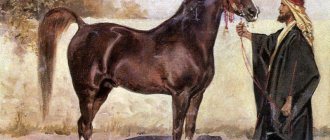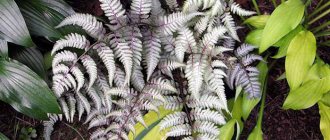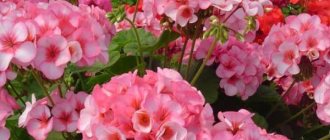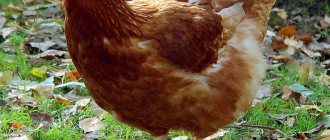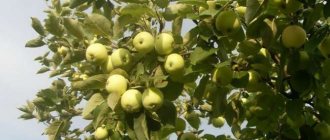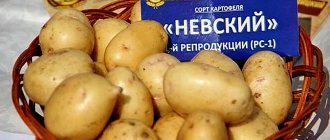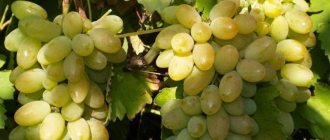Dun horse: description
The colors of horses can be different: yellow-sand, golden or gray, the mane and tail have a contrasting black color. Thanks to this combination of shades, it is possible to emphasize all the advantages of the gallant horse. The height of a horse can vary from 1.47 m to 1.63 m. The horse breed has the following distinctive features:
- eye color can vary from brown to rich amber;
- has a uniform color of the body and head (the most common are cognac, golden, light sand and yellow-white);
- gray skin;
- the hairs of the legs are colored black (the hind legs are up to the hock joint, and the front legs are up to the carpal joint).
Brown horses are quite rare; they are incredibly expensive and require thorough care. Horses with characteristic black spots along the spine have a “wild” gene. It does not spoil the suit; on the contrary, it testifies to the pronounced natural origin of the species. You can also find such horses with brown limbs. This is due to the presence of a gene, but another one. It has the ability to brighten tones.
Damn horse
What suits still exist?
For thousands of years, stallions have been bred with each other to produce stronger, braver, hardier horses, so it is not surprising that there are now so many different colors.
Isabella suit is one of the rarest
- Isabella suit is one of the rarest. It was highly valued by the Spanish Queen Isabella, and it was in her honor that the suit was named. What is its peculiarity? Representatives of this suit are cream-colored. The eyes are almost always blue, but sometimes green. The skin is usually soft pink. Inherent in Akhal-Teke horses. But even among this breed, such a color is rare.
- The Savras horse has a light bay or red color. She looks dull. It is believed that this color appeared naturally to make it easier for wild horses to hide in the wild. The mane and tail are usually brown, whitish or red. This breed may also have zebra stripes, dark spots on the sides, or black legs.
- Brown suit appeared, as it is believed, during evolution, without human intervention. The color of the horses is light red. The mane and tail will differ in color. They can be brown, brown, almost black. The animal also has a dark stripe along the ridge; zebra striping is also possible.
The nightingale horse is light yellow or golden in color
- The nightingale horse is light yellow or golden in color. It is often distinguished by the shine of its hairs. As an example, we can cite individuals of the Akhal-Teke breed. The mane and iris of the eye are usually amber in color. The cover can be dark salt, golden, apple-colored, or light salt.
- The karak color is considered a variety of bay. The body, limbs, head and mane are black or almost black, but this color is complemented by light brown markings around the eyes and mouth. There may be spots on the body, and a light stripe on the forehead.
- The pinto horse has no obvious color. It can be black, red or bay, but large white spots are scattered throughout the body of such a horse, which distinguishes it. The total area of light spots is larger than the background color. Inherent in outbred animals.
- The game horse is similar to the nighting horse.
The main color is red-brown. The mane and tail are light or even white. It is interesting that this horse has a mane and tail, and its limbs most often differ in color. Spots may be present. Most often, Haflingers, Belgian draft horses, are born with this color. White color does not exist in principle, but there is such a quality as albinism - In principle, white color A newborn will have it if a certain gene is present. White horses are often classified as a separate color because they look incredibly beautiful and majestic. At all times, white horses were highly valued, but it is believed that the gene that gives the white color makes the animals also unstable to diseases, so that already at birth about 25% of such animals die!
- The dun horse has a color ranging from golden to pale yellow. The tail and mane are as black as possible, as are the irises and the bottom of the limbs. The cover comes with apples or silver-bulana.
In addition, there are also roan, wine, sable, gray, agate, ermine, blue, forelock, brindle and many different colors. When choosing, many amateurs focus specifically on the color of the stallions, and not on the breed. So this feature of the animal plays an important role in horse breeding.
Division into layers
Black horse
Brown horse, what color is this? In general, the suit is so extensive that today one can count a large number of variations. Below are the main names of colors and their features.
Gray horse color
It is characterized by its unusual silvery tint color. Small foals are quite difficult to distinguish from gray ones. This is due to the fact that the silvery-yellowish tint begins to predominate somewhat later. The gray horse has the most submissive disposition.
Chagrave horse
Stands out among all dun horse styles. A characteristic feature of such horses is the presence of unusual patterns on their bodies. This can be explained by the uneven distribution of black fur over the body, namely: on the back, sides, shoulders, along the crest, shoulder blades and muzzle. A large amount of light hair is located on the limbs. Thanks to this combination of shades, the pattern on the body is clearly visible.
Chagrave horse
Dark brown horse
It is characterized by a brownish-yellow or dark brown color (no reddish tint). Quite often, representatives of this breed have black spots on their bodies.
Light dun suit
This color, in turn, is also divided into several colors, from cream to light sand. In the first case, it is important not to confuse the cream color of the dun color with the isabella color. A distinctive feature that allows you to establish the authenticity of the suit is the presence of a coal-black mane and tail.
Golden dun horse
It cannot help but be striking, its unusual, rather fairy-tale color. There is a characteristic golden tint on the yellow body.
Important: it is generally accepted that if black shades predominate in the color of the limbs, then the color is indigenous. This suggests that a “wild” gene is present in the horse’s genotype. Experts will classify such a representative as a Savras suit.
They also talk about the existence of a horse “buckwheat” - when its entire body is strewn with numerous small brown spots.
Golden dun horse
Varieties of suits
Basic suits
- Black breed - characterized by a solid black color of the body, tail and mane. The eyes and skin of this type of animal are also dark. Throughout its life, this breed changes color to a lighter one.
- Red - the coloring of the tail, mane and body is uniform and has a light brown tint. This breed has different shades - from light apricot to dark chestnut. The tail and mane can also be darker or lighter.
- Gray - over time, the hair of this breed of animal becomes lighter and acquires a light gray or white color. Depending on this, the gray color has the following shades: with graying hair, buckwheat, with apples and others.
- Nightingale - this breed is characterized by a light color of the tail and mane and a light cream color of the body.
Mixed suits
- Bay. This color is characterized by a brown body color of various shades and black lower parts of the legs, tail and mane. Depending on what shade the animal has, it is customary to distinguish between deer, red, cherry and other derivatives.
- Damn suit . This color is determined by the illuminator gene. It is characterized by a light sandy body color, darkening on the lower parts of the legs and a black tail and mane. Dun horses have a variety of shades - from light to dark.
- Roan . This shade is characterized by admixtures of light hair on the main color. Depending on this, they distinguish between raven-roan, red-roan and bay-roan colors.
- Piebald. This breed is characterized by irregularly shaped white spots on the main color. Depending on where exactly they are located, the following types of piebald are distinguished: frame overo, splashed white, tobiano, sabino.
- Karakova combines basic black hair with brown tan highlights. Light-colored areas are present mainly on the croup and chest of the animal. The scorch marks are very visible. It is often mistakenly confused with the dark bay color.
- Isabella . The color of the animal's hair and body is light cream tones. The eyes are light blue and the skin is pink. This is a very rare breed, formed on the basis of any dark one. This breed should not be confused with albinos, who have no pigmentation.
- Chubaraya. This breed cannot be clearly described. Its difference is the random small spots on the animal’s body.
- Igrenovaya . This breed is characterized by a chocolate or dark brown tone on the body and a light cream tail and mane.
- Podlasaya . A bay breed whose face has patches of white on the bridge of the nose or forehead, near the mouth and eyes, and on the groin and leg joints. Do not confuse the piebald and the silverback.
- Olena is a bay . This combination is called a bay horse, which has more than two shades, moving from darker to lighter. This suit is characterized by a light color in the groin and armpits, on the stomach. But the croup, withers and back are darker. And also shades can have a transition on the face.
Datura herb: description, properties, photos, use in folk medicine
Wild suits
- The Kauraya is a variety of red breed that is slightly lighter in color but with darkish "wild" markings. The tail and mane are also richer than the tone of the body.
- Mousey . A rare unusual breed of gray horses. It is formed against a background of black rock with a bluish or ashen tint. This breed is characterized by light cream tones.
- Savrasaya . It has a light red tone, formed against the background of a bay color with clearly expressed wild markings. A characteristic feature is subgrouping.
Origin story
Isabella horse
The dun horse is an aristocratic animal. This is due to the unusual light gray color, which has always classified the animal as “noble”. In English, the dun color of a horse is translated as “deer skin.” However, this horse color is not the only one.
The origin of the suit remains a mystery to this day. There is no information about the place and time of origin of the species. But some historical writings note that in Parthia the horses were exclusively yellow in color.
The first facts about the animal appeared in the 16th century, when new exotic representatives of horses appeared in Europe: nightingales and dun horses. It is at this stage that the formation of that very aristocracy takes place; the nobility used only them.
Gray horse color
Please note: with the beginning of the Romantic era, the popularity of dun horses began to decline, since horses of dark colors were stronger and more resilient.
Photo suits, examples
Some representatives of the suit have left their names in history. Examples of this can be found in surviving historical documents. For example, the story of Peter the Great’s horse named Lisette is interesting. The Tsar was returning from the Great Embassy when, on the way out of Riga, he met merchants leading a beautiful stallion under the bridle. The king liked the animal so much that he paid a generous sum for it. The merchants happily sold the horse, since it was worth much less.
Although Peter I bought a male, he named him with the beautiful female name Lisette. The horse went through many battles and campaigns with its owner. In the battle of Poltava, a combat friend even saved the tsar by dragging him away from the battlefield. The horse with a woman's name had a complex disposition. He only allowed Peter I to approach him, and even accepted food only from his hands. When Lisette died, the king ordered him to be stuffed and placed in the palace. For artists, the stuffed horse became a model for painting. In all portraits of Peter the Great, only Lisette was depicted.
The tradition of breeding dun horses in Russia began to strengthen. The best stud farms bred these animals. For example, the horse Aniline in the 60s. XX century won many races, becoming the first three-time winner of major European competitions. And the stallion Symbol twice became a laureate at VDNKh. On it, Marshal K.E. Voroshilov more than once hosted military parades. In one of his portraits, the marshal is seated on the Symbol.
Temper and behavior
Roan
Centuries ago, they tried to determine its character and behavioral characteristics by the color of a horse. Black horses were considered uncontrollable aggressors, red horses were unbalanced and capricious, and bay horses were obedient and hardy. These principles are still followed in equestrian sports today. But experts are convinced that a horse’s color has nothing to do with its temperament.
Brown horses can be quite capricious at times, and finding a common language with them is not so easy. But if a horse likes a person, it will allow him to train itself.
What is a suit
Color is a combination of the color of the skin, mane, tail and eyes, in general. This characteristic of horses, as a rule, is inherited by the younger generation, although there are exceptions. There are also obvious genetic differences between suits. So if an animal inherits a bay color, it will not have a white mane. It is for this reason that there are many suits, but not very many. If there were no fixation of certain genetic characteristics, there would be many more suits.
Color is a combination of the color of the skin, mane, tail and eyes
Features of care and feeding
The lifespan of a dun horse rarely exceeds 30 years. A balanced, high-quality diet, proper care and regular examinations by a veterinarian will significantly extend the lifespan of a horse.
Dark brown horse
Nutrition
The horse's daily diet should include the following list of products:
- wheat and rye;
- potatoes, carrots, beets and apples;
- pure water;
- legumes;
- hay, oats and straw.
When feeding your pet, you should pay attention to several important rules:
- Before each meal, the animal must drink the desired amount of water. On hot days, the recommended amount is 50 liters, in winter it is limited to 30 liters;
- It is recommended to feed horses often, but in small portions. Excess calories lead to malfunctions of the digestive system, stomach and intestinal colic;
- The diet should be varied. The products should contain a high concentration of fiber, vitamins, macro- and microelements.
You should refrain from eating if physical activity is expected in the near future.
Light dun suit
Exotic suits
In order to obtain new exotic species, professionals cross representatives of good colors with Przewalski's horses, zebras, ponies, and mustangs. This is reflected in the color, endurance, temperament, character and appearance of the horse. Creating a new species requires a lot of time and money. Very often the investment is not justified. You can get single unique copies that are not inherited. For example, it is very rare to find a white breed of horses .
Bay lances have an isabella or silver body color and a black dewlap. They are often the result of breeding the isabella or gray color with the bay. The black tail and mane look very effective against the background of the exotic cream-colored skin. But the downside is that this color is poorly transmitted hereditarily.
Substrates
Despite belonging to the dun color, horses can have different undertones, that is, a variety of shades of animal fur within the same breed.
The color of a horse is determined by the following parameters:
- eyes and head;
- neck;
- animal croup;
- legs and brushes;
- tail and mane.
Depending on the color shades of the listed body parts, stallions and mares belong to one color or another.
It is curious that it is almost impossible to determine the color of a foal: the color of the baby’s coat changes over time, and this can only be done when the animal reaches approximately six months of age.
The following parameters are typical for dun horses:
- eyes brown, very rarely honey;
- The animal's croup and neck are light, with different shades of golden yellow;
- the horses' legs looked like they were wearing dark socks;
- tail and mane are black;
- the entire undercoat is shiny.
The contrasting combination of light and dark tones makes the animal incredibly beautiful and majestic.
Among the bases, there are several types of animal color.
Golden
Animals of this undercoat attract attention thanks to the golden pollen scattered throughout their yellow-colored fur. It was this breed that was described in fairy tales and legends of antiquity. Golden horses are the favorite color of eastern sheikhs
Light
The undercoat of light-colored horses varies from yellow sand to creme brulee. In some animals, the color of the head is slightly darker than the body. The aristocracy of the light tan horses is emphasized by the shiny and pitch-black mane and tail.
